Whether you’re using hazelnuts in baking, enrobing a dessert with chocolate or simply snacking on their sweet, crunchy, they are an invaluable kitchen ingredient for any home cook.
Unfortunately, if you’re allergic to this lovely nut, or if it seems hard to come by where you live, finding a suitable substitute for hazelnuts is really in need.
We’ll discuss plenty of options that will satisfy your culinary needs just as well!
Read on to learn more about substituting for hazelnuts in both savory and sweet dishes.
What Are Hazelnuts?
Hazelnuts, also known as filberts, are small, round, edible nuts that grow in clusters on the hazel tree.
They have a sweet flavor and a firm texture when roasted or cooked.
Hazelnuts are typically used for baking goods such as cookies and cakes, but they can also be used to make nut spreads like Nutella and hazelnut oil for cooking and baking.
They are also a popular snack item when roasted and salted or even coated in chocolate.
Hazelnuts can be chopped and stirred into oatmeal, added to granola bars, used as a topping for salads, or used to make pesto.
Although they can be eaten raw, it is generally recommended to toast them first in order to bring out their full flavor.
Hazelnuts are a rich source of dietary fiber, vitamins, minerals, and heart-healthy fats, making them a nutritious addition to many dishes.
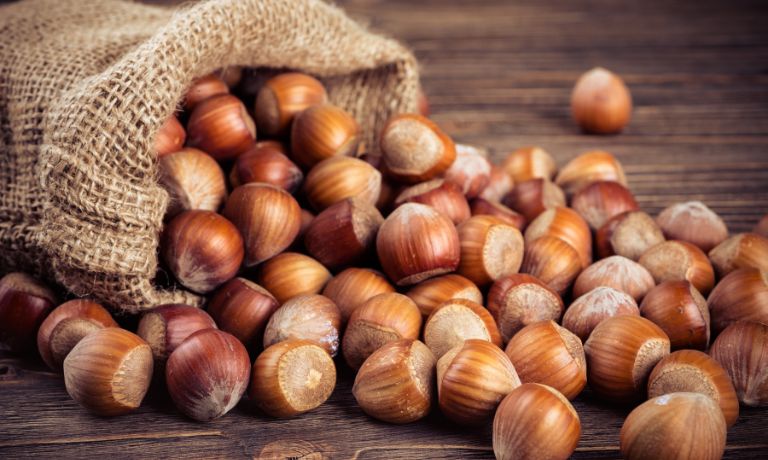
Substitutes For Hazelnuts
Hazelnuts are a delicious and nutritious nut, but they can be difficult to find in some places or expensive for those on a budget.
Luckily, there are several alternatives that can provide a similar taste and texture:
Almonds
Almonds are a type of nut known scientifically as Prunus dulcis. They have a sweet, nutty flavor and can be eaten raw or roasted.
Almonds are an excellent source of healthy fats, protein, fiber, magnesium, phosphorus, iron, zinc and other vitamins and minerals.
Due to their high nutrient content, almonds can be used as an alternative to hazelnuts in many recipes.
They are especially versatile in baking, as their mild flavor and texture make them easy to work with.
They also contain less fat than hazelnuts, making them an ideal ingredient for low-fat desserts.
They also add crunch and a nutty flavor to salads and other dishes.

Cashews
Cashews are a nut native to tropical regions of South and Central America.
They belong to the same family as peanuts and have an elongated shape similar to hazelnuts but slightly softer.
Cashews are highly nutritious, containing vitamins E, K, and B6, magnesium, zinc, copper, phosphorus, iron, and selenium.
Cashews have a mild flavor that is slightly sweet with nutty undertones, making them a popular ingredient in many dishes.
As a substitute for hazelnuts, they can create a crunchy texture in baked goods and add to salads or sauces as a nutty flavor enhancer.
Cashews are also often ground into a paste and used as an alternative to cream or butter in vegan recipes.
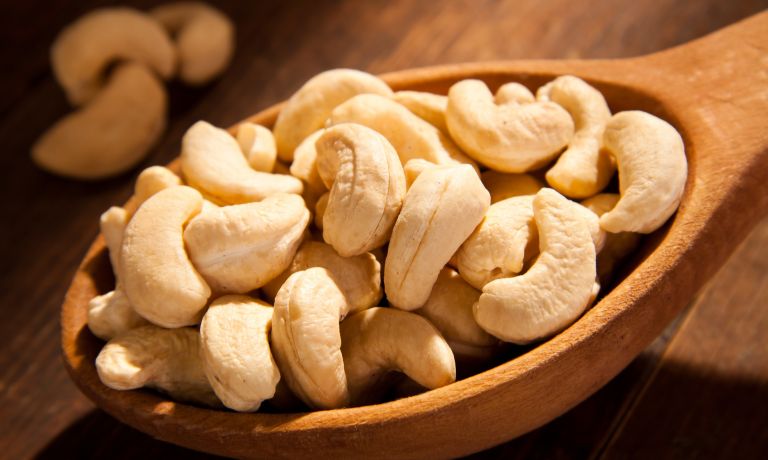
Pecans
Pecans are a type of tree nut native to North America and related to the walnut family.
Pecans have a sweet, buttery flavor that is often compared to hazelnuts.
They can be used as an alternative to hazelnuts in baking recipes due to their similar taste and texture.
Pecans are a great source of healthy fats, antioxidants, vitamins, and minerals.
Pecans also contain copper, which is important for proper nutrient absorption.
Substituting pecans for hazelnuts can add variety to recipes and provide additional health benefits.
Pecans can also be eaten as a snack, added to salads or yogurt, or used in savory dishes like pecan-crusted chicken.
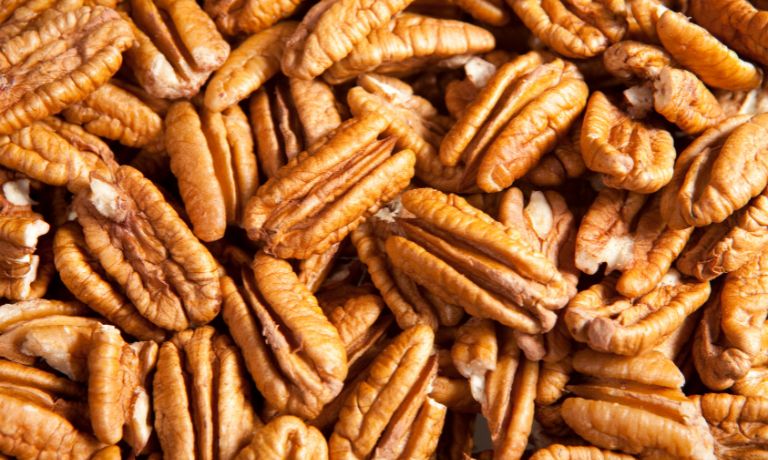
Walnuts
Walnuts are a nut native to the Mediterranean and Central Asia but are now widely cultivated in many parts of the world.
Walnuts have a mild, slightly sweet flavor and can be eaten raw or roasted, used in baking, or ground into a paste.
They are high in protein, vitamins B6 and E, and omega-3 fatty acids.
Walnuts are also a good source of dietary fiber, magnesium, and phosphorus.
They can be used instead of hazelnuts in many recipes, such as cakes, muffins, and cookies.
The nuts can also be used in savory dishes such as salads, pesto and sauces.
Additionally, walnuts have fewer calories, making them a better choice for those looking to maintain or lose weight.
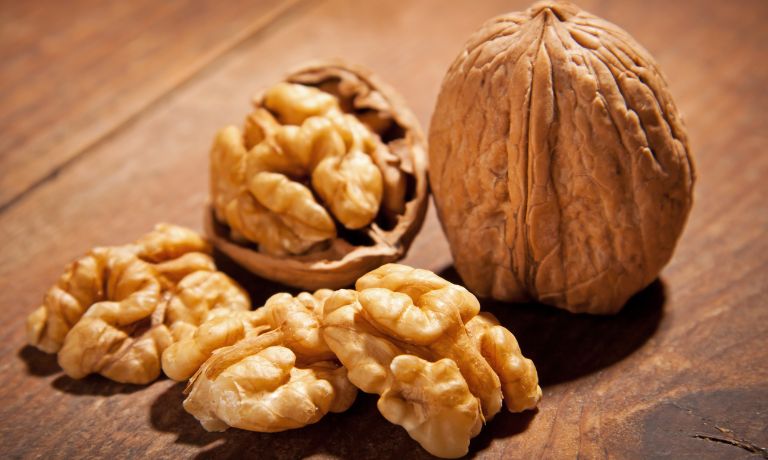
Pistachios
Pistachios are a type of nut similar in size and shape to hazelnuts.
They have a slightly sweet flavor and earthy undertone, making them a great alternative to hazelnuts.
Pistachios are rich in healthy fats, protein, fiber, and essential vitamins and minerals such as vitamin E, magnesium, and potassium.
Pistachios can be used in baking, added to salads, or snacked on as a healthy snack between meals.
They can also be ground into a paste to use as a nut butter substitute in recipes or as a spread for toast.
Pistachios are an incredibly versatile and nutritious nut that can easily be substituted for hazelnuts in any recipe.
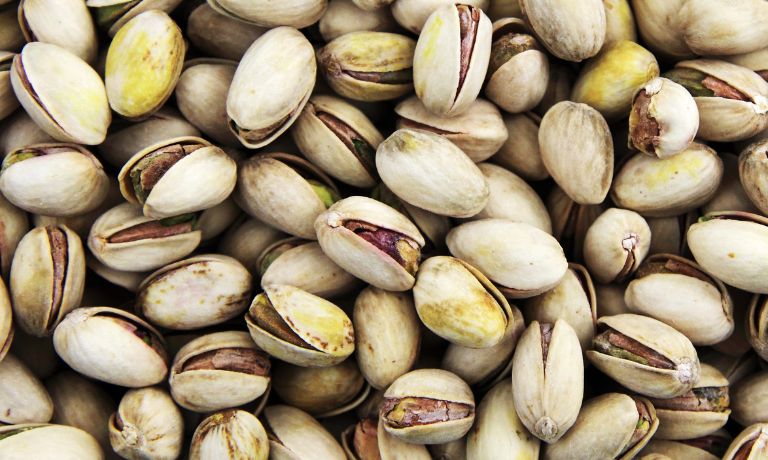
Macadamia Nuts
Macadamia nuts, sometimes known as Queensland Nuts, are a type of nut that comes from the macadamia tree native to Australia and New Guinea.
Macadamia nuts are rounded and have a sweet flavor. They are commonly sold either shelled or unshelled and can be eaten raw or roasted.
Macadamia nuts are becoming a popular substitute for hazelnuts in various recipes.
This is because macadamias can be used in many of the same ways as hazelnuts, and they have a more mild flavor that some people prefer.
Furthermore, macadamias are high in healthy fats, and contain several important vitamins and minerals.
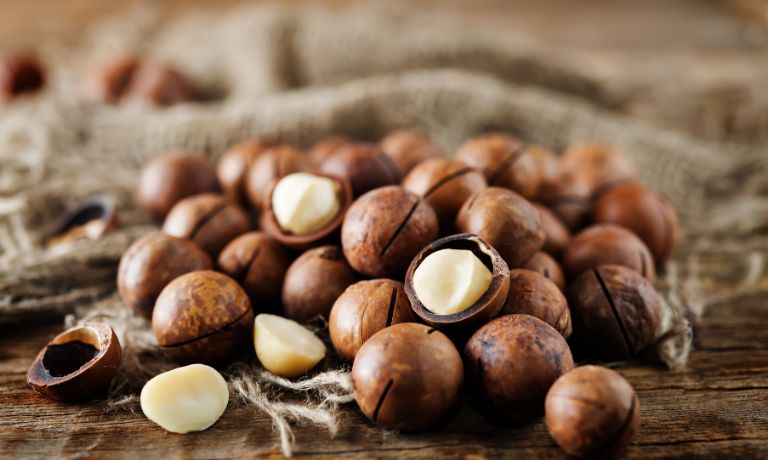
Hazelnut Butter
Hazelnut butter is a creamy, nutty spread made from ground hazelnuts.
It can be used as a substitute for hazelnuts in baking and cooking recipes or eaten as a delicious snack.
The smooth texture of hazelnut butter makes it a great addition to oatmeal, toast, smoothies and pancakes.
It can also be used in sauces, dressings and desserts.
Hazelnut butter is rich in healthy fats, proteins, vitamins and minerals, making it a nutritious alternative to other nut butter.
The flavor of hazelnut butter is slightly sweet, with nutty undertones and buttery notes.
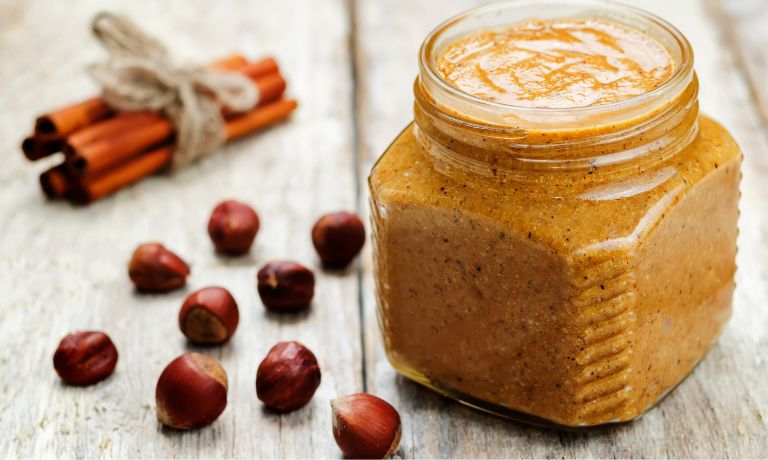
Hazelnut Extract
Hazelnut extract is a natural flavoring that can substitute for hazelnuts in recipes.
It has a rich, nutty flavor and aroma similar to the real thing.
The extract is usually made from roasted and finely ground hazelnuts and has the same flavor components as an actual hazelnut.
It’s perfect for adding a subtle nutty flavor to cakes, cookies, and other treats.
The extract can also be used in small amounts as a topping or garnish to give dishes an extra-nutty boost.
Hazelnut extract is a great way to add flavor without adding calories or fat, making it a healthier alternative to real hazelnuts.
Additionally, it’s much easier to store and use than actual hazelnuts.
With its flavor and convenience, hazelnut extract is an excellent substitution for real hazelnuts in many recipes.
FAQs
What Distinguishes Walnuts And Hazelnuts?
Walnuts and hazelnuts are both nuts that have distinct flavor profiles.
Walnuts have a unique taste described as earthy and slightly sweet, with notes of bitterness.
They also tend to be slightly larger than hazelnuts.
On the other hand, Hazelnuts are much sweeter, savory and nuttier in taste.
They are also usually much smaller than walnuts and have a distinctively smooth texture.
Are Peanut And Hazelnut The Same?
No, the two varieties of nuts are different. Peanuts are part of the legume family and are related to beans and lentils.
Hazelnuts are part of the tree nut family, including walnuts and almonds.
Although both have a similar flavor, they have different nutritional profiles due to their respective plant families.
Are Hazelnuts The Same As Nuts?
Yes, hazelnuts are considered as nuts.
Hazelnuts have a hard shell with an edible seed with a sweet, nutty flavor.
Conclusion
Hazelnuts are delicious and versatile nuts, but sometimes they can be difficult to find.
Fortunately, there are plenty of ingredients to substitute for hazelnuts in recipes.
Almonds, cashews, pecans, walnuts, pistachios and macadamia nuts are all great options.
Each nut provides its unique flavor, texture, and a range of health benefits.

